- Home
- Julian Stockwin
Stockwin's Maritime Miscellany Page 3
Stockwin's Maritime Miscellany Read online
Page 3
Broke’s victory brought official recognition that in battle good gunnery is as important as bravery – and the subsequent establishment of the world’s first school of naval gunnery in 1830 at HMS Excellent, moored off the northwest corner of Portsmouth dockyard. Her larboard broadside was positioned to face Fareham Creek so that the firing of guns would not trouble civilians ashore.
HMS Shannon and USS Chesapeake.
* * *
IN THE DOLDRUMS – in a state of depression. DERIVATION: the Doldrums is a belt of winds between the trade winds of the northern and southern hemispheres. As ships passed through these latitudes there was often no breeze to fill the sails or cool the living spaces and they were becalmed in sweltering conditions, aimlessly drifting.
* * *
THE SEA LORD AND THE NOBLE SAVAGE
Omai was the first Tahitian to visit England, arriving on board HMS Adventure on 14 July 1774. In his early twenties, he was brought at his own request from the Society Islands by Captain Tobias Furneaux, listed on the ship’s muster book as a supernumerary under the name Tetuby Homey. His family had once been wealthy landowners but had lost their property in tribal conflicts, and Omai, hoping the English might be able to help him seek revenge, had begged Furneaux to take him to ‘Britannia’. In England Omai became an exemplar of the ‘noble savage’ propounded by philosophers such as Rousseau.
The eminent scientists Sir Joseph Banks and Dr Carl Solander, who were both familiar with the Tahitian language, took Omai under their wing and introduced him into society. He was personally welcomed by the First Lord of the Admiralty, the Earl of Sandwich. The sea lord entertained Omai at his country house, Hinchingbrooke, where guests experienced the novelty of feasting on meats cooked over hot stones Polynesian style. He took him on a tour of Chatham Dockyard and aboard HMS Victory, where Omai expressed great joy at seeing so large a ship. Omai was delighted with a suit of armour that his host had made for him by the artificers of the Tower of London.
The sea lord’s protégé quickly became the toast of the town. He met George III twice and when first presented to the royal personage he declared, ‘How do, King Tosh.’ The monarch was so taken with the young man that he granted him a pension while he was in England. Omai dined with the great names of the day such as Samuel Johnson and Fanny Burney; he went to balls, the opera and attended the state opening of parliament. He loved indulging in various British pastimes such as shooting, skating and picnicking, was a frequent guest at Royal Society dinners and was painted by some of the great artists of the time, including Joshua Reynolds.
Omai returned to Polynesia in 1777, on the last of Captain Cook’s voyages. He died there two years later, apparently of natural causes.
ACTUALLY…
Captain Digby in HMS Africa, along with another British ship, HMS Conqueror, took on the Spanish flagship Santissima Trinidad at the Battle of Trafalgar. With rigging and sails hanging over her sides and the firing ceased, it appeared that the Spanish vessel had struck her colours, the signal of surrender. Digby sent Lieutenant Smith with a party of seamen to take possession. In accordance with the code of honour observed in naval engagements of that time Smith was courteously received by the Spanish officers, who then coldly informed him that in fact they had not actually surrendered and had no intention of doing so. They went on to explain that they had merely paused in the fighting to supply more powder to the guns; Smith was escorted back to his ship’s boat and allowed to return safely to Africa, which went on to seek other opponents. Santissima Trinidad eventually surrendered to another English warship, HMS Neptune, but sank in a storm the day after the battle.
* * *
DON’T LIKE THE CUT OF HIS JIB – put off by a person’s outward appearance. DERIVATION: for an experienced sailor the cut of a jib, a triangular sail on the foremast, was a characteristic indicator of the type of ship, and sometimes the nationality. French and Spanish ships often had their jibs cut very much higher than British ships.
* * *
WATCH THE WALL, MY DARLING, WHILE THE GENTLEMEN GO BY
In the days before income tax the government of England had to raise money however it could. In the eighteenth century there were over 2,000 items subject to customs duty. This was the heyday of the smuggler and large numbers of people were either directly or indirectly involved – to many it was a perfectly acceptable way of behaving. Some newspapers ran advertisements such as this one from a Sussex paper of 1785 offering: ‘A very useful cart, fit for a maltster, ash-man, or a smuggler… and many articles that are very useful to a smuggler.’ Not only did the authorities often turn a blind eye: some were happy to fill their own cellars with contraband goods.
Some smugglers have endeared themselves down the years. Harry Paulet was master of an English vessel trading in North America when he was taken prisoner by the French. He contrived a daring escape, carrying with him important official documents that he had stolen from his captors, and he handed these over to the captain of an English ship. The information they contained proved valuable to the navy, and with the reward money he was granted Paulet went back to England and promptly purchased a vessel that he used to run contraband across the Channel.
He was returning from France in 1759 when he spotted the French fleet leaving Brest, headed for England. Paulet threw over his helm and sailed to Admiral Hawke’s squadron with the news. Upon hearing what he had to say the admiral told him that if he was right he would make his fortune, but if it was deceit he would hang at the yardarm. With Paulet on board the British set off and subsequently gained a decisive victory at the Battle of Quiberon Bay. Paulet’s cash reward enabled him to retire in style, and for the rest of his life he took much pleasure in recounting these exploits at his local tavern.
Perhaps the most famous Cornish smuggler was John Carter, ‘the king of Prussia’, a nickname from a favourite boyhood game. He had his headquarters in a remote inlet between Penzance and Helson, which became known as Prussia Cove. Carter was a devout Methodist who banned swearing on his smuggling vessels. He once suffered the indignity of having goods seized by the revenue men that he had promised to one of his regular customers. He broke into the customs house and reclaimed ‘his’ property but left everything else untouched. The matter was taken no further.
On the other hand, there were bands of smugglers who terrorised whole areas and were quite prepared to maim and murder to protect their interests. The notorious Hawkhurst gang of Kent could raise 500 armed men in less than an hour to defend their goods, and the customs officers were unable to touch them.
Despite generous rewards offered, smugglers were rarely turned in to the authorities.
‘I HAVE NOT YET BEGUN TO FIGHT!’
John Paul Jones, one of the American navy’s first heroes, was born in a humble gardener’s cottage in Kirkbean, Scotland. He joined the merchant marine at 13 and sailed to the West Indies. In 1773 he was involved in an incident there in which a man was killed and John Paul, as he was then, fled to the United States, changing his name to John Paul Jones.
Commissioned into the Continental Navy, the new navy of the United States, he took part in several actions in the early stages of the Revolutionary War off the North American coast and also in raids on English shores. In 1776, on board Alfred, he hoisted by his own hand the first flag ever flown from a US warship, a yellow silk banner emblazoned with a rattlesnake. In his ship Ranger in 1777 he captured the British warship HMS Drake, the first man-of-war to surrender to a Continental Navy ship flying the Stars and Stripes. Jones became the toast of the French as well as the Americans for this action.
He then put to sea in Bonhomme Richard with a small squadron to harass British merchantmen. Jones encountered a Baltic convoy of 44 vessels, escorted by the frigate HMS Serapis under the command of Captain Pearson. After a furious four-hour battle, Serapis came alongside Bonhomme Richard, which had been badly damaged. Pearson hailed Jones and asked if he was surrendering, to be told: ‘I have not yet begun to fight!’ Then Sera
pis caught fire and Jones seized his chance and boarded her, taking the vessel. Bonhomme Richard sank shortly afterwards and Jones sailed in Serapis to the Texel, where he was welcomed as a hero.
Jones spent much of the rest of his life in France. In 1905, more than a century after his death in Paris, his remains were returned to the United States and entombed at the US Naval Academy in Annapolis, Maryland, where his shrine, permanently guarded by a duty midshipman, is open to the public.
John Paul Jones.
NOBLE FORBEARANCE
When the white ensign of HMS Bellerophon was shot away for the third time during the Battle of Trafalgar, Christopher Beaty, a yeoman of signals, refused to accept this affront to his ship. He hastily rummaged around for another one and then began to climb hand over hand up the mizzenmast with the flag wrapped around his shoulders. Almost instantly he was the target of enemy fire, but he pressed on doggedly. When he reached the top, he spread out the ensign and proceeded to attach the corners firmly to the shrouds so that it stood proud. At this point the French sharpshooters in the tops of L’Aigle suspended their fire in recognition of his courageous action and allowed Beaty to clamber back down unharmed.
* * *
COPPER BOTTOMED – a pretty safe bet, often describing an investment. DERIVATION: in 1783 the Royal Navy started routinely sheathing the hulls of wooden warships with copper to prevent infestation from wood-destroying parasites such as the infamous gribble and teredo worms. This was seen to be very effective.
* * *
SEAMAN TO SAMURAI
In Japan William Adams became known as ‘Miura Anjin’, the pilot of Miura, after the estate he was given in recognition of his services to his adopted country. An English navigator, Adams served under Francis Drake and was later recruited by the Dutch for their trading voyages to the East Indies.
In April 1600, after more than 19 gruelling months at sea, the merchantman Liefde anchored off Kyushu in Japan. Adams was among what remained of the crew, just 20 sick and dying men. Initially believed to be pirates, they were seized and incarcerated. Adams was nearly executed, but as the fittest of the prisoners he was brought to Osaka for questioning. A powerful feudal lord who would later become shogun took a liking to him, eventually making him a diplomatic and trade adviser and bestowing great privileges on him.
Adams supervised the building of several Western-style ships for the shogun, who conferred the rank and authority of a samurai on him. Although he had a wife and children in England, Adams married a Japanese woman and had another family with her, but he was forbidden to leave Japan.
In 1611 a letter from Adams was received at the London offices of the East India Company. As a result they began sending ships to the Far East to trade with Japan. Adams facilitated similar arrangements with the Netherlands and personally became involved in Japan’s Red Seal trade, in which merchant sailing vessels conducted business with Southeast Asian ports under the authority of a red seal permit issued by the shogun.
One of the most influential foreigners during Japan’s first period of opening to the West, William Adams died in Japan on 16 May 1620, aged 56. His life story inspired the character of John Blackthorne in James Clavell’s Shogun.
Red Seal ship.
‘MY FIN’
Following his injury from a musket-ball at Tenerife in 1794, Nelson’s right arm was amputated high up near the shoulder. The operation was performed without anaesthesia, and it is unlikely that he was given rum to dull the pain as alcohol was said to interfere with the clotting of the blood. Within a short time of the surgery he was issuing orders to his captains. The wound, however, took many months to heal as one of the ligatures used during the operation, which normally fell out after a few weeks, remained in the wound, causing continuing infection and intense pain.
The surgeons who performed the amputation and the doctors and apothecaries who cared for Nelson received special payment; he was reimbursed £135 1s. 0d. for his medical expenses.
Nelson sometimes experienced the sensation of a phantom arm. He nicknamed the stump his ‘fin’, and it was said that it twitched if he was agitated or angry. Officers would then warn: ‘The admiral is working his fin, do not cross his hawse.’
* * *
Armless Jokes
Nelson sometimes joked about his affliction. On his arrival in Great Yarmouth in November 1800 the landlady of the Wrestlers Arms asked permission to rename her pub the ‘Nelson Arms’ in his honour. ‘That would be absurd, seeing I have but one,’ he replied. And when, at a levée at St James Palace, George III referred to his having lost his right arm, Nelson came back swiftly, ‘But not my right hand,’ and, turning to one of his companions, told the king, ‘I have the honour of presenting Captain Berry.’
* * *
SOME PASSENGER …
Shortly after the Battle of Waterloo Napoleon Bonaparte surrendered – not to Wellington but to the captain of the ship that had dogged his steps for more than 20 years, HMS Bellerophon – ‘Billy Ruffian’ to her crew. The ship sailed for England and dropped anchor at Torbay on 24 July 1815. Every effort was made to keep the famous man’s presence a secret, and no one was allowed to come on board. However, a sailor dropped into the water a black glass bottle which was retrieved by some young boys in a small boat nearby. Inside the bottle was a rolled piece of paper with the electrifying message, ‘We have Bonaparte on board!’
Once the word spread, the vessel was quickly surrounded by sightseers in anything that could float. Bonaparte even appeared on deck to greet the crowds. The British government was worried that the emperor might escape before they could work out what to do with him, so Bellerophon was hastily ordered to weigh anchor and sail to Plymouth, with its more secure harbour.
Needless to say people thronged there; at the height of the madness 10,000 people boarded 1,000 boats in an attempt to get a view of the most famous man in the world. Several even drowned in the frenzy.
The crew of Bellerophon hung notices over the ship’s side as to their famous guest’s movements: ‘In cabin with Captain Maitland’, ‘Writing with his officers’…
Among the crowds were large numbers of pretty young women, naval officers, fashionably dressed ladies, red-coated army officers and smartly attired gentlemen. The men took off their hats respectfully when Napoleon showed himself, as he did every evening around 6 p.m. He commented on the beauty of the young ladies and appeared astonished by the size of the crowds.
On 7 August Napoleon was transferred to HMS Northumberland for exile in St Helena, where he died in 1821.
Bonaparte was proclaimed First Consul for Life in 1802. He crowned himself Emperor Napoleon I in 1804.
* * *
SWINGING THE LEAD – skiving to avoid work. DERIVATION: the depth of water under a vessel was measured by lowering a lead weight on the end of a rope over the side of a ship. It was necessary to twirl the line and shoot it ahead so that by the time the lead had sunk to the bottom the ship’s headway would have brought the line perpendicular and the correct depth could be seen. Some seamen would make a great display of twirling the lead around their heads, pretending to be active rather than doing the job properly.
* * *
‘BLACK DICK’ TO THE RESCUE
Richard Howe was one of the larger-than-life figures in British maritime history. He spent 60 years as a professional sea officer, serving with great distinction in many of the famous fleet actions of the age. Howe was officially Lord Richard Howe of Langar Hall, but to the sailors of the fleet he was always just ‘Black Dick’. There have been a number of explanations offered for this, his swarthy complexion being one. The fact that he was said never to smile unless a battle was about to begin may also have earned him his nickname!
On 16 April 1797, a mutiny began at Spithead, the chief naval anchorage near Portsmouth. Sixteen ships in the Channel Fleet raised the red flag of insurrection: their principal demands were for a rise in pay (which had not been changed for 150 years), a more equitable distribution of pr
ize money and better victuals. The mutineers elected delegates from each ship to represent them.
When negotiations broke down between the two sides, George III personally requested Howe, who was held in very high regard by British seamen, to go down and talk to the mutineers. Although over 70 and suffering from gout and other ailments, he agreed. When First Lord Spencer asked the admiral who he wished to accompany him he replied simply, ‘Lady Howe.’
They set out on 10 May on a wild and stormy night and arrived at Portsmouth the following morning. Howe left his wife at the governor’s house and immediately set out by barge for Spithead. He came alongside HMS Royal George, the headquarters of the insurrection, and despite his infirmities he rejected all offers to help him come aboard and clambered up unaided. He called the ship’s company to the quarterdeck and started to talk to them man to man, neither reproaching their conduct nor standing on his dignity. Several hours later he went to HMS Queen Charlotte. For three days he went from ship to ship – talking, listening, heaving his rheumaticky knees and gouty feet up and down ladders until he was so tired he had to be lifted in and out of his boat. But by the end he had achieved reconciliation on both sides, with a Royal pardon for all the mutineers, a reassignment of some of the most unpopular officers and a pay rise and better victualling for the seamen.

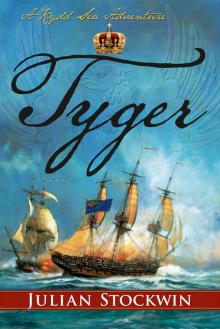 Tyger: A Kydd Sea Adventure (Kydd Sea Adventures)
Tyger: A Kydd Sea Adventure (Kydd Sea Adventures) Seaflower - Kydd 03
Seaflower - Kydd 03 6-Tenacious
6-Tenacious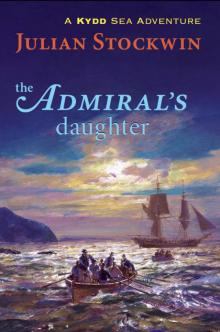 The Admiral's Daughter
The Admiral's Daughter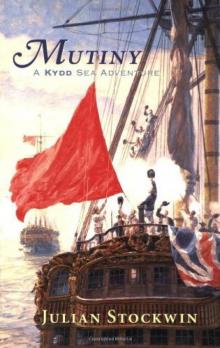 Mutiny k-4
Mutiny k-4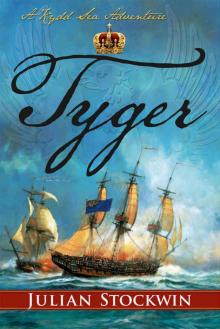 Tyger
Tyger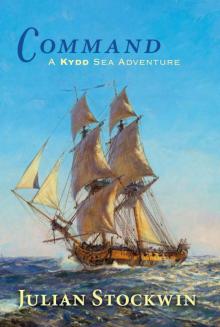 Command
Command Pasha
Pasha Artemis k-2
Artemis k-2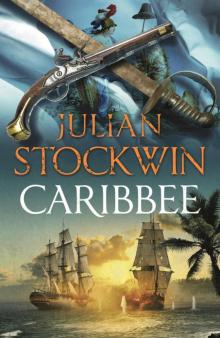 14-Caribbee: A Kydd Sea Adventure
14-Caribbee: A Kydd Sea Adventure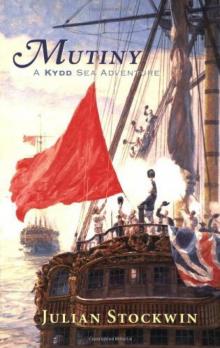 Mutiny - Kydd 04
Mutiny - Kydd 04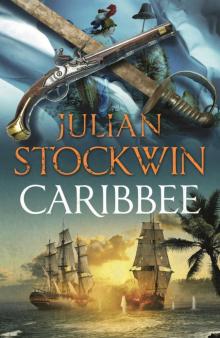 Caribbee
Caribbee Victory
Victory Quarterdeck
Quarterdeck Artemis - Kydd 02
Artemis - Kydd 02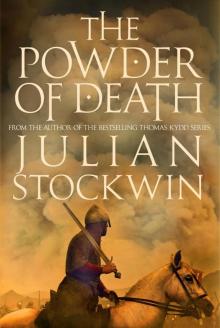 The Powder of Death
The Powder of Death Conquest
Conquest Betrayal tk-13
Betrayal tk-13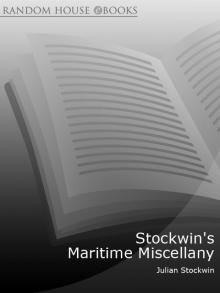 Stockwin's Maritime Miscellany
Stockwin's Maritime Miscellany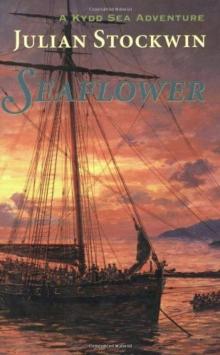 Seaflower: A Kydd Novel
Seaflower: A Kydd Novel Mutiny
Mutiny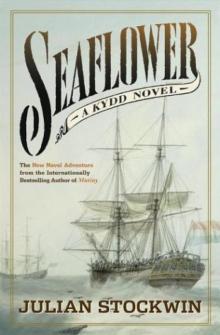 Seaflower k-3
Seaflower k-3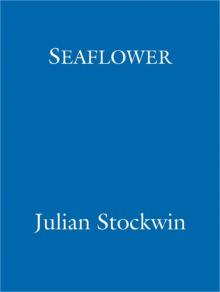 Seaflower
Seaflower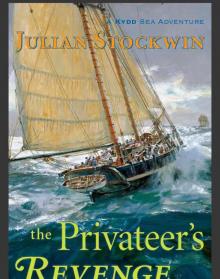 The Privateer's Revenge
The Privateer's Revenge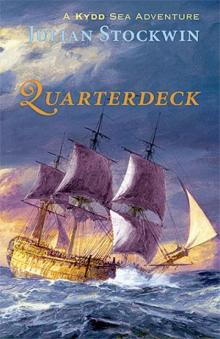 Quarterdeck: A Kydd Sea Adventure
Quarterdeck: A Kydd Sea Adventure Kydd
Kydd Artemis
Artemis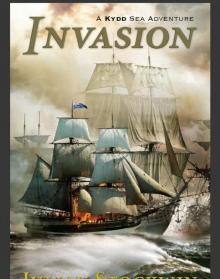 Invasion
Invasion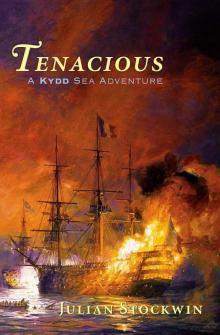 Tenacious
Tenacious 06 - Tenacious
06 - Tenacious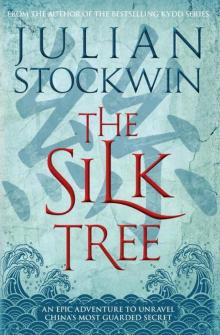 The Silk Tree
The Silk Tree